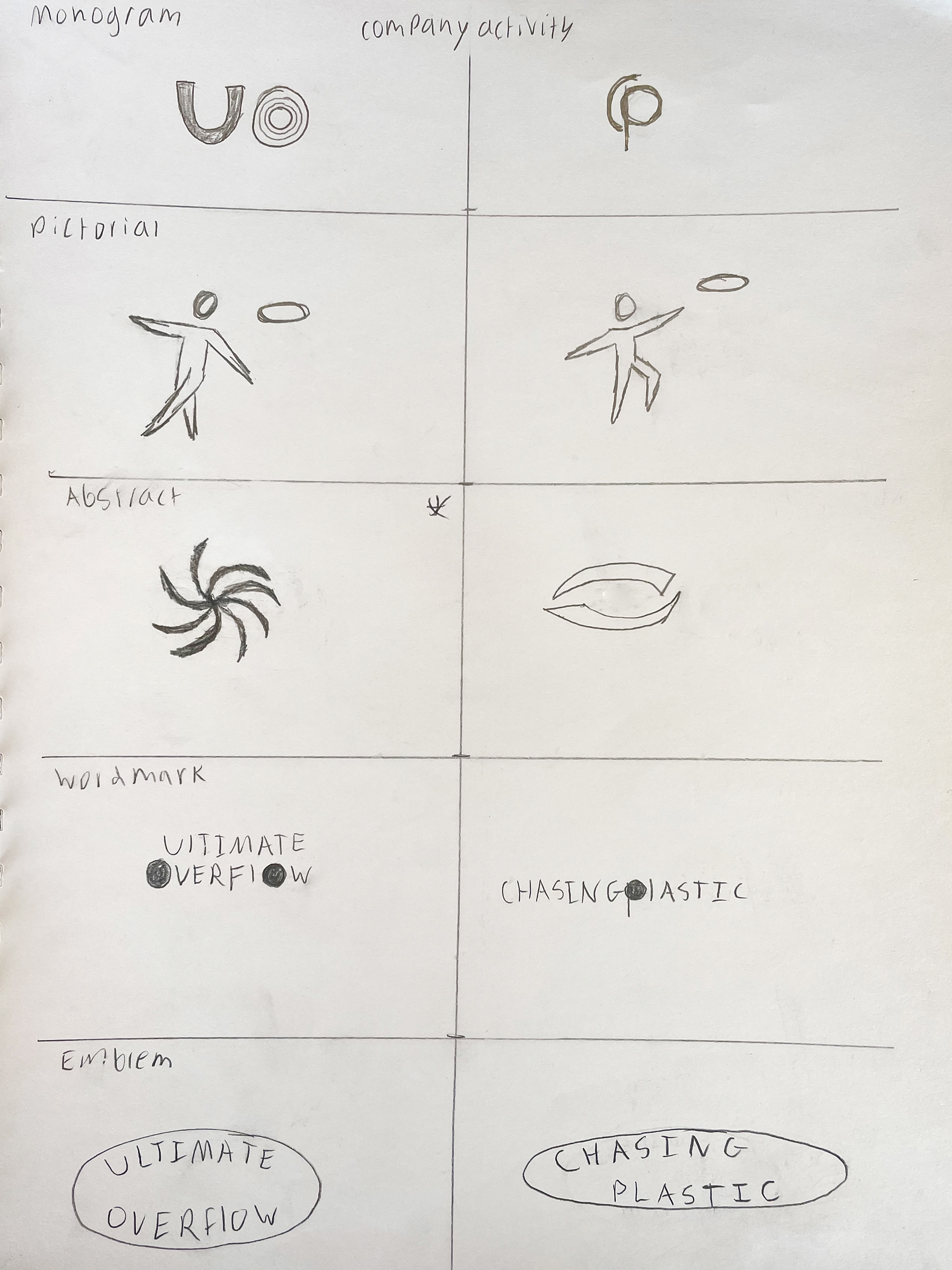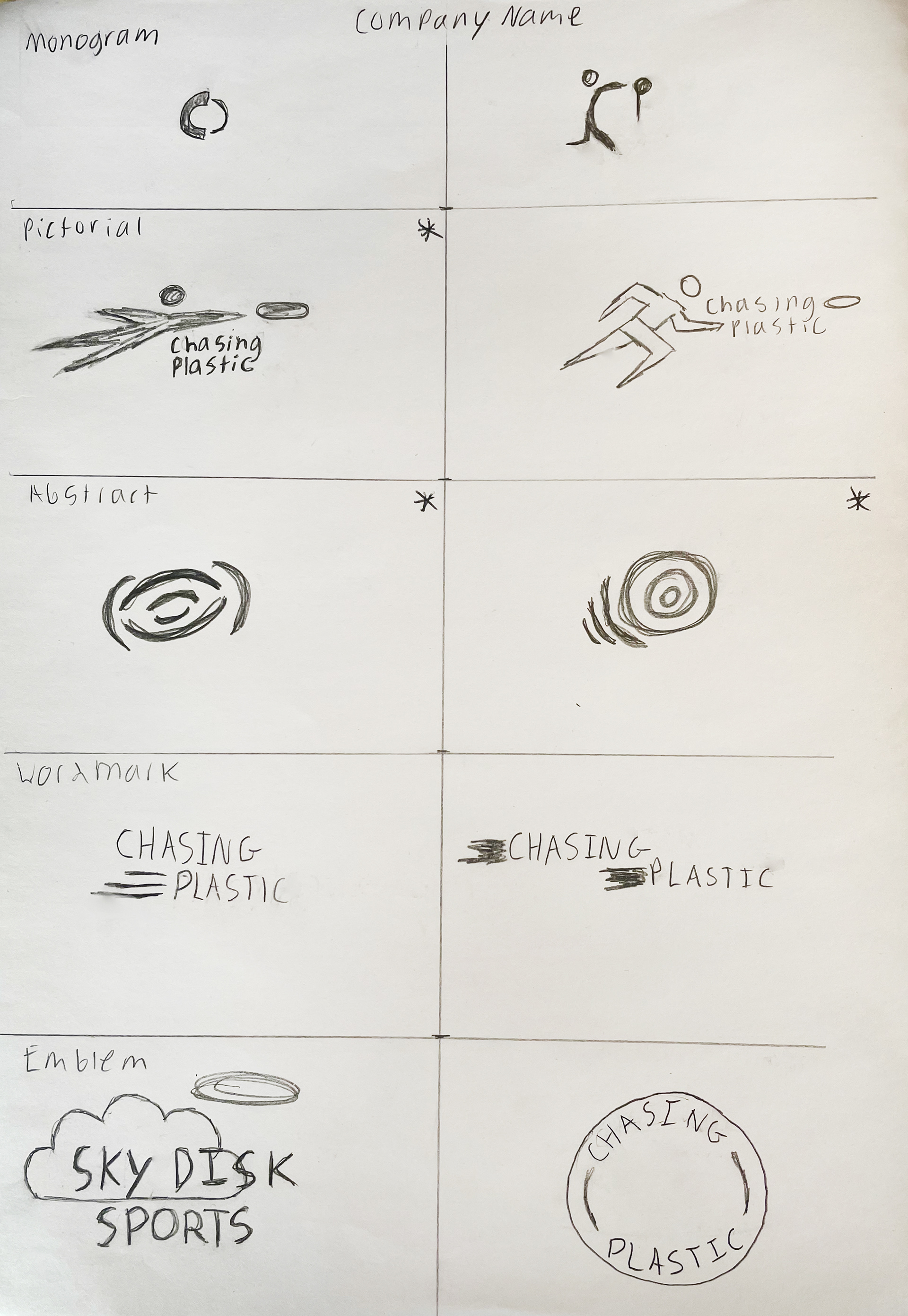Apply a systematic approach to solve problems
Systematic Approach to Logo Sketches



I applied a systematic approach to create the initial sketches for an eCommerce logo for my brand Identity 1 course. The sketches are for the logo of an ultimate frisbee gear eCommerce company called Chasing Plastic. The systematic approach consisted of categorizing thirty logo concept sketches into three conceptual approaches and five visual approaches. The three conceptual approaches are company name, company activity, and company ideals which are the three ways the logo can represent the brand. The logo sketches in the company name category are logos that visualize the name of the company which is, in this case, Chasing Plastic. The name of the company had not been finalized at the time of completing these sketches which is why there are sketches for other names as well. The logo sketches in the company activity category represent what the company does so in this case, they represent what Chasing Plastic sells which is primarily frisbees. The company ideals category includes logo sketches that represent qualities the company wants the audience to associate with them, in this case, these logo sketches represent speed and other similar sports related ideals. Within each of these three concept approaches, two logo sketches have been done using each of the five visual approaches. Those include monogram, pictorial, abstract, wordmark, and emblem. Using this systematic approach in logo design gives me the opportunity to explore many different concepts and ideas to be able to choose the best one to move forward within the design process.
Applying a Design Thinking Process
As a part of my Design Research course, I used a design thinking process as a systematic approach to solve the design problem. The objective of the project was to redesign to improve the usability of the Blackboard interface which is the online learning management system that is used at St. Lawrence College. I took a systematic approach to solve this design problem by researching the current interface through user testing with students, conducting a heuristic evaluation, and having interviews with faculty. Using the data I collected from my primary research, I began the process of redesigning the interface by creating a prototype. The process of designing the prototype consisted of creating wireframe sketches, conducting user testing with the prototype, and having interviews about the prototype with faculty and students. This project demonstrated my skills in using a systematic research process to solve the design problem by successfully re-designing the blackboard interface to have increased usability.
Use a variety of thinking skills to anticipate and solve problems
Brainstorming with Mindmaps
Brainstorming by creating mind maps is a thinking skill that I often use to generate ideas on how to solve design problems. In this example, I brainstormed ideas for logo concepts for the Canadian Disaster Response Organization for a project in my Brand Identity Design 2 course. I started by writing in Canadian Disaster Response Organization in the center and branched any words I associated with each of the words in the name. I also included any other words that come to mind when thinking about the CDRO and what they do and represent. I then expanded on these ideas by writing more words that I associate with the previous words. Once I had explored enough ideas, I went through my mind map, highlighted keywords, and began brainstorming ways of connecting pairs of words to create a concept with them. Using mind mapping as a brainstorming technique helps to narrow down broad ideas to serve as a starting point for any project. It is a helpful thinking skill that I use as a starting point for generating ideas for most of my projects.
User Testing to Solve Problems
As a part of my Design Research course, I did a project where I conducted inquiry-based research to solve a design problem. The purpose of the project was the evaluate the usability of the Blackboard interface and re-design it to be more user-friendly. I conducted user testing where I asked students to complete specific tasks while navigating Blackboard. I evaluated how they completed the tasks and asked them questions about their experience using Blackboard. Based on the results of the user testing, I evaluated the interface to find out what needed to be changed about it in order to improve it to be more user-friendly.